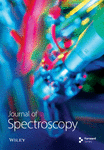FTIR microscopy as a method for detection of retrovirally transformed cells
Abstract
Fourier transform infrared (FTIR) spectroscopy is a unique technique that has potential for the optical diagnosis of cellular variations based on the characteristic molecular vibrational spectra of the cells. In the present study, a refinement of this technique − FTIR microscopy − was used in a mouse model to investigate spectral differences between primary cells and malignant cells transformed by murine sarcoma virus (MuSV). The advantage of FTIR microscopy is that it facilitates inspection of a restricted region of cell growth on a slide. A significant decrease in the intensities of the spectra was seen in malignant cells transformed by MuSV compared to primary normal cells. Also, there was a significant shift in the PO2− symmetric stretching mode from 1082 cm−1 for normal cells to 1086 cm−1 for malignant cells. Detectable and consistent differences between normal primary and malignant cells were evident in the shapes and positions of a number of peaks in the FTIR spectra. Our results indicated that FTIR microscopy has potential as a diagnostic method for the detection of malignant cells.




